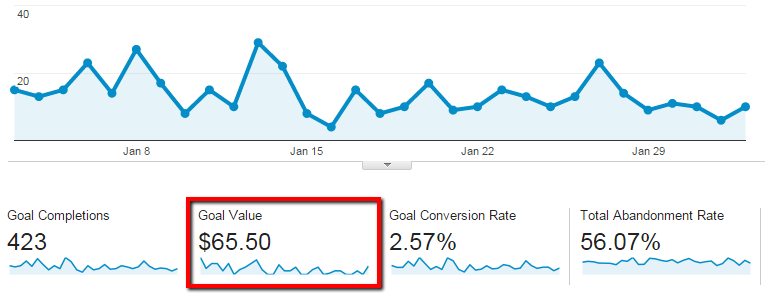What Data Is Google Analytics Goals Unable to Track: Learn the Limitations
What Data Is Google Analytics Goals Unable to Track: Learn the Limitations
Blog Article
Introducing the Blind Spots: Understanding What Google Analytics Goals Can not Gauge
In the world of electronic analytics, Google Analytics stands as an effective tool for monitoring and examining online customer communications. Amidst its durable abilities, there exist blind areas that often evade measurement. what data is google analytics goals unable to track. Understanding what Google Analytics goals can not determine is vital for acquiring a comprehensive view of customer behavior and engagement. As we dig into the ins and outs of these dead spots, we discover a complicated web of uncharted territories that hold useful understandings into user actions and motivations, challenging standard wisdom and shedding light on the limitations of our data-driven understanding.
Individual Habits on External Operatings Systems
Understanding just how individuals engage on exterior systems is crucial for enhancing online techniques. External platforms, such as social media networks, recommendation web sites, and online discussion forums, play a substantial function in driving traffic to a business's internet site. By examining customer behavior on these systems, services can obtain useful understandings into the efficiency of their advertising initiatives and the preferences of their target market.
One trick aspect of customer habits on external systems is the recommendation source. By tracking where the individuals are originating from, services can identify which systems are driving the most traffic to their website. This information can help companies assign their resources better, focusing on the systems that generate the most effective outcomes.

Offline Interactions and conversions
Evaluating customer actions on exterior platforms supplies valuable understandings into online techniques; nevertheless, taking into consideration offline conversions and interactions is equally necessary for a detailed understanding of a firm's general efficiency. Offline conversions, such as in-store purchases or phone inquiries, play a considerable role in many companies' success.

Acknowledgment Beyond Last Click
When delving into the world of electronic advertising analytics, it comes to be necessary to look past the single touchpoint of the last click for a more thorough understanding of acknowledgment. While Google Analytics gives beneficial insights into customer behavior, depending solely on last-click attribution can be limiting - what data is go right here google analytics goals unable to track. Acknowledgment models that surpass the last click offer a much more nuanced view of the client journey, thinking about all the touchpoints that cause a conversion
Attribution beyond the last click allows online marketers to assign credit to different interactions along the conversion path, providing a clearer photo of the performance of various marketing networks. By exploring multi-touch attribution designs such as straight, time decay, or position-based attribution, organizations can much better allot their marketing budgets and enhance their methods for maximum effect.
Recognizing the influence of each touchpoint in the conversion procedure is vital for making educated choices and maximizing ROI. By embracing attribution beyond the last click, companies can get deeper understandings right into customer behavior and customize their marketing efforts more efficiently.
Cross-Device and Cross-Browser Tracking

In a similar way, cross-browser tracking enhances cross-device monitoring by capturing user actions as they switch in between different internet browsers. Understanding exactly how individuals engage with internet sites on different internet browsers can aid marketing experts optimize their on-line experiences to ensure consistency and performance across various platforms.
Qualitative Information and Individual Intent
Recognizing individual intent through qualitative data evaluation is important for creating targeted digital advertising and marketing techniques that reverberate with the requirements and choices of the target market. Qualitative information provides understandings right into the have a peek here 'why' behind customer actions, dropping light on motivations, feelings, and choices that measurable data alone can not catch. By evaluating individual comments, comments, and interactions, marketing experts can discover useful details concerning individual intent, enabling them to tailor their messaging, content, and offerings to better align with what their audience is seeking.
Qualitative information also assists in comprehending the context in which users involve with a site or app. This contextual understanding enables marketing experts to develop even more pertinent and tailored experiences, inevitably driving higher involvement and conversion rates. By diving into user intent via qualitative information analysis, organizations can acquire a much deeper understanding of their target market, bring about extra reliable marketing methods that fulfill users' demands and expectations.
Verdict
Finally, Google Analytics goals have restrictions in gauging individual behavior on outside systems, offline conversions, attribution beyond last click, cross-device and cross-browser tracking, and qualitative data associated with individual intent. what data is google analytics goals unable to track. It is necessary for businesses to be mindful of these blind places in order to supplement their information analysis with various other devices and methods to obtain a much more extensive understanding of their target market and boost their general digital marketing strategies
By evaluating user habits on these systems, companies can get useful understandings right into the efficiency of their advertising and marketing efforts and the choices of their target audience.
Evaluating customer actions on exterior platforms supplies useful insights right into on-line techniques; nevertheless, taking into consideration offline conversions and interactions is similarly important for a detailed understanding of a firm's overall performance.In electronic marketing analytics, relocating past last-click attribution to check out cross-device and cross-browser tracking is necessary for gaining an alternative understanding of individual interactions across different platforms and tools. By evaluating individual feedback, remarks, and communications, marketers can discover important details regarding user intent, enabling them to tailor their messaging, material, and offerings to much better align with what their audience is seeking.
By delving into user intent with qualitative information analysis, businesses can get a much deeper understanding of their target audience, leading to a lot more reliable advertising and marketing techniques that satisfy users' expectations and demands.
Report this page